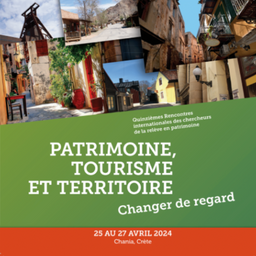Strategies and tactics of heritage appropriation in sacred spaces. A case study of a group of sand painters in Bagan, Myanmar
My Session Status
Bagan, inscribed on UNESCO’s World Heritage List in 2019, is a unique cultural treasure trove with over three thousand Buddhist buildings, whose frescoes in more than 300 temples bear pictorial witness to Buddhist art. The emergence of “Bagan sand painting” by local artists, originally intended for the reproduction of mural images in order to preserve cultural heritage, has become a popular travel souvenir thanks to the boom in tourism. This transformation has also created professional opportunities for the local community, with some miners and peasants becoming painters or vendors.
This article explores the motivations of this specific group and analyzes their reception of heritage labelling and recognition, while studying the multiple approaches to appropriating sacred spaces, with a particular focus on temples. Based on six months of field research carried out in Bagan, Myanmar, between 2017 and 2019, this study reveals that heritage appropriation in Bagan manifests itself both directly and obviously, but also in hidden and fluid ways. In contrast to the workers employed in the hotel and restaurant sectors, and the artisans in the lacquer workshops, the eleven cases studied, including painters and paint sellers, appear to be closely linked to the sacred space. Their livelihoods depend heavily on temple occupancy or constant movement within the site.
Our approach draws on Michel de Certeau’s 1990 distinction between strategy and tactics to analyze the different forms of social resistance behaviour of citizens in their daily lives. In the Bagan context, local actors have used their right to work to rearrange the layout of temples in a variety of ways. They have implemented strategies of occupation, such as inheriting temples and their role as guardians, using temples as places for artistic creation, as well as demonstrating the process of creating paintings to tourists, a practice commonly referred to as “performance.” At the same time, informal vendors outside the temples employed subtle tactics, for example sharing private spaces, exploiting marginal areas for optimal use, as well as moving frequently around the site, thus fostering chance encounters and informal exchanges, often escaping detection by the authorities.
The results of our study highlight the various forms of appropriation of Bagan’s heritage through individual tourist practices. Although it has been suggested that the forced relocation of 1990 led to the disappearance of daily life within the site, creating a static existence in this archaeological park, such a judgment seems prematurely definitive. In the field, it is observed that the group of sand painters and vendors strives to construct an environment based on personal spatial practices. They can be seen as pioneering actors in territoriality, where sovereignty over the transformation of heritage space into tourist space gradually returns to the hands of the local community, in the context of the social appropriation of territory.
